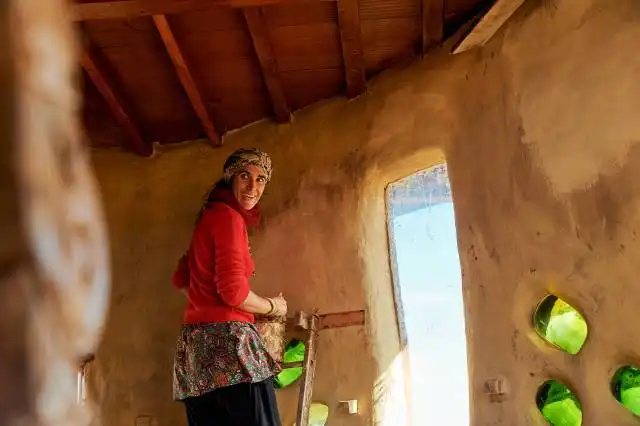Start a Green Consulting Business
Becoming an Eco-Superhero: The Profitable Impact of Green Consultancy
| Updated


GREEN CONSULTING BUSINESS
Welcome aboard budding entrepreneur! A Green Consulting Business is your ticket to making a significant environmental impact whilst powering your career. Essentially, your business would offer insightful counsel on sustainable practices, helping other companies reduce their carbon footprints. Imagine yourself as the green superhero, swooping in to save businesses from their energy-wasting woes – not just because it’s good for our beautiful planet, but also because it’s great for their bottom line as well. It's a win-win for business and the environment!
Jump to Business Plan
RELATED BUSINESS IDEAS
Browse ALL Sustainability & Eco-Friendly Initiatives Business Ideas
Discover Your Perfect Domain
Unlock the door to your online success with our hand-picked selection of premium domain names. Whether you're starting a new venture or rebranding an existing one, the right domain can set the tone for your digital presence. Browse through our curated list, each with its unique potential to enhance your brand's visibility and credibility.
GREEN CONSULTING MINI BUSINESS PLAN
This a quick reality check to help you identify the strengths and weaknesses of your business concept before you dive in.
Expected Percent Margin:
- Gross Margin: 40-60%
- Net Profit Margin: 15-25%
Earnings Expectations:
- Daily Earnings: $100 - $300
- Weekly Earnings: $500 - $1,500
- Monthly Earnings: $2,000 - $6,000
- Annual Earnings: $24,000 - $72,000
Actions to Hit Those Numbers:
Service Development:
- Specializing: Focusing on 2-3 core services (i.e. waste management consulting, energy auditing, sustainability planning).
- Pricing Strategy: Setting competitive pricing aligned with your expertise and market rates.
Marketing and Client Acquisition:
- Networking: Attending at least 5 industry-relevant networking events a month.
- Website and Online Presence: Regularly publishing blogs, podcasts, or videos related to green consulting topics.
- Referral Program: Introducing a referral bonus to encourage clients to refer your services to peers.
Sales and Customer Success:
- Client Meetings: Schedule at least 2-5 client meetings per week.
- Proposals: Regularly submitting thorough, compelling service proposals to targeted businesses.
- Retention Strategy: Implementing a clear client success protocol to keep clients satisfied.
Cost Control:
- Operating Expenses: Keeping overheads low by working remotely or from a home office initially.
- Software and Subscriptions: Budgeting around $100-$200 monthly for necessary software and subscriptions.
Business Operations:
- Utilization Ratio: Aiming for a consultant utilization ratio of about 70-80% to avoid overworking and burnout.
- Continuous Learning: Investing in regular skill and knowledge updates to stay relevant in the marketplace.
The above figures are estimations and can differ based on various factors such as specific location, market conditions, and detailed business strategy. Remember to consult with a finance or business consultant for tailored advice.
NOT WHAT YOU HAD IN MIND? Here are more ideas



Browse ALL Sustainability & Eco-Friendly Initiatives Business Ideas
Grab Your Business Website Name
Before you get caught up in the whirlwind of setting up your business, invest in a domain name. It's a small but significant step that lays the foundation for your brand and makes it easier for customers to find and trust you. Just like you wouldn't build a house without securing the land first, don't build a business without securing your domain name.
"Why? Can't that wait?" Here's why it shouldn't
Step 1: Determine if a Green Consulting Business is Right for You
Breakdown of Startup Expenses
Starting a green consulting business can be a costly endeavor. Before taking the plunge, it is important to understand the startup costs associated with the business. This includes costs for office space, furniture, computers, software, and other necessary equipment. It is also important to consider the cost of hiring staff, marketing, and other administrative costs. It is also important to consider the cost of obtaining any necessary certifications or licenses.
Breakdown of Ongoing Expenses
Once the business is up and running, there are ongoing expenses to consider. This includes costs for rent, utilities, insurance, and any other necessary expenses. It is also important to consider the cost of marketing and advertising, as well as the cost of any necessary staff. It is also important to consider the cost of any necessary certifications or licenses that may be required.
Examples of Ways to Make Money
There are a variety of ways to make money with a green consulting business. This includes offering services such as energy audits, energy efficiency consulting, green building consulting, and green product consulting. It is also possible to offer consulting services on renewable energy sources, such as solar, wind, and geothermal energy. Additionally, it is possible to offer consulting services on green building materials, green building design, and green building construction. Finally, it is possible to offer consulting services on green product design and green product manufacturing.
Step 2: Name the Business
Naming a business is an important step in the process of starting a green consulting business. It is important to choose a name that reflects the business’s mission and values, as well as one that is easy to remember and pronounce. It is also important to make sure the name is not already taken, so it is important to do a thorough search to ensure the desired name is available. Additionally, it is important to make sure the name is available as a domain name, as this will make it easier for customers to find the business online. It is also important to consider the implications of the name in different countries or cultures, as this could potentially cause confusion or offense.
When choosing a name, it is important to consider the type of business and the services it will provide. For example, a business that focuses on energy efficiency consulting could include words such as “energy”, “efficiency”, or “green” in its name. Additionally, it is important to consider the target audience and the message the name will convey. For example, a business that focuses on helping small businesses go green could include words such as “sustainability” or “eco-friendly” in its name.
Once a name has been chosen, it is important to make sure the name is legally protected. This includes registering the business name with the relevant government agency, as well as registering the name as a trademark. This will help protect the business from any potential legal issues in the future. Additionally, it is important to make sure the name is available as a domain name, as this will make it easier for customers to find the business online.
Finally, it is important to create a logo for the business. This logo should be simple and memorable, and should reflect the mission and values of the business. It is also important to make sure the logo is available in different formats, such as a vector file, so it can be used on different platforms and materials.
Step 3: Develop a Business Plan
When developing a business plan, it is important to include the following components: mission statement, market analysis, competitive analysis, operational plan, management team, financial plan, and exit strategy.
The mission statement should define the purpose of the business and what it hopes to achieve. It should also provide a clear direction for the business and serve as a guide for decision-making.
The market analysis should include an overview of the industry, a description of the target market, and an analysis of the competition. This will help to identify potential customers and determine how to best position the business in the market.
The competitive analysis should provide an in-depth look at the competition. This should include an analysis of the competition’s strengths and weaknesses, as well as an assessment of the potential opportunities and threats posed by the competition.
The operational plan should outline the day-to-day operations of the business. This should include a description of the products and services offered, the processes used to produce them, and the strategies used to market them.
The management team should include a description of the roles and responsibilities of each team member. It should also include a description of the team’s experience and qualifications.
The financial plan should include an analysis of the startup costs, an estimate of the ongoing costs, and a projection of the expected revenues. This will help to determine the viability of the business.
The exit strategy should outline the plan for exiting the business. This should include an assessment of the potential buyers and a timeline for the sale.
Step 4: Obtain Licenses and Permits
When starting a green consulting business, it is important to understand the types of licenses and permits that may be required. Depending on the state, there may be different requirements for a business license, tax registration, or other permits. It is important to research the local and state regulations to ensure the business is compliant. Additionally, some businesses may require additional permits such as a zoning permit or a permit to operate hazardous materials.
How to Obtain Licenses and Permits
Once the types of licenses and permits have been identified, the next step is to obtain them. This can be done by researching the local and state regulations, as well as contacting the local government office. Additionally, there may be online resources available to help with the process. Once the necessary paperwork is completed, the business can apply for the licenses and permits. It is important to note that the process may take some time, so it is important to plan accordingly.
Cost of Licenses and Permits
The cost of licenses and permits can vary depending on the type of business and the state or local regulations. Generally, the cost of a business license can range from a few hundred dollars to several thousand dollars. Additionally, there may be other fees associated with obtaining the necessary licenses and permits. It is important to research the cost of the licenses and permits before starting the business.
Benefits of Obtaining Licenses and Permits
Obtaining the necessary licenses and permits is an important step in starting a green consulting business. Having the proper licenses and permits ensures that the business is compliant with local and state regulations. Additionally, having the proper licenses and permits can help to legitimize the business and make it more attractive to potential customers.
Step 5: Find a Location
When choosing a location for your green consulting business, there are many factors to consider. First, you should consider the size of the space you need. Depending on the services you offer, you may need a large office space or a smaller space that can be used for meetings. Additionally, you should consider the cost of the space. If you are on a tight budget, you may want to consider a shared office space or a virtual office. You should also consider the location of the space. Is it easily accessible for your clients? Is it in a safe area? Is there ample parking? Finally, you should consider the amenities that the space offers. Does it have a kitchen? Are there conference rooms? Is there a reception area? All of these factors should be taken into account when selecting a location for your business.
Securing a Location
Once you have identified a suitable location for your green consulting business, you will need to secure it. This may involve signing a lease or purchasing the property. If you are leasing the space, you should read the lease carefully to ensure that it meets your needs. You should also consider the length of the lease and any additional costs associated with it. If you are purchasing the property, you should consult with a real estate attorney to ensure that the purchase is in your best interest. Additionally, you should consider any zoning regulations that may affect your business. Once you have secured the location, you can begin to move in and set up your business.
Step 6: Market Your Business
When it comes to marketing your green consulting business, there are a few strategies you can use to get the word out. First, you should create a website that showcases your services and provides potential clients with information about your business. You should also create a blog to provide helpful tips and advice to potential clients. Additionally, you should consider joining local networking groups and attending industry events to make connections and spread the word about your business. Finally, you should consider investing in online advertising to reach a wider audience.
Develop a Brand
In order to make your business stand out from the competition, you should develop a unique brand. This includes creating a logo, choosing a tagline, and selecting a color palette. Additionally, you should create a mission statement that outlines your values and goals. This will help potential clients understand what your business is all about and why they should choose you over other green consultants.
Utilize Social Media
Social media is a great way to reach potential clients and spread the word about your business. You should create accounts on popular platforms such as Facebook, Twitter, and Instagram. You can use these accounts to share helpful tips and advice, promote special offers, and post updates about your business. Additionally, you should consider running targeted ads to reach potential clients in your area.
Network
Networking is an important part of marketing your business. You should attend local events and join industry organizations to make connections and spread the word about your business. Additionally, you should consider reaching out to local businesses and organizations to see if they need your services. Finally, you should consider offering free consultations to potential clients to demonstrate your expertise and build trust.
Step 7: Hire Employees
When starting a green consulting business, it is important to hire the right employees. The best way to do this is to create a job description that outlines the skills and qualifications necessary for the job. Additionally, it is important to conduct interviews with potential employees to get a better understanding of their qualifications and to ensure that they are a good fit for the company. It is also important to consider the cost of hiring employees, such as wages, benefits, and other associated costs. Finally, it is important to provide employees with the necessary training and resources to ensure that they are successful in their roles.
Step 8: Market the Business
Advertising and Promotion
Once the business is up and running, it is important to market the business to potential customers. This can be done through a variety of methods, such as creating a website, utilizing social media, and advertising in local newspapers and magazines. Additionally, it is important to create a unique brand identity for the business and to use promotional materials, such as flyers and brochures, to spread the word about the business. It is also important to consider the cost of advertising and promotion when budgeting for the business.
Step 9: Monitor Progress
Tracking Performance
Once the business is up and running, it is important to monitor progress and track performance. This can be done by tracking sales, customer feedback, and other metrics that can help to identify areas of improvement. Additionally, it is important to review the financials of the business on a regular basis to ensure that the business is profitable. Finally, it is important to review the goals of the business and adjust the strategies and tactics accordingly to ensure that the business is on track to reach its goals.
Step 8: Set Up Accounting and Bookkeeping Systems
Setting up accounting and bookkeeping systems is an important step in starting a green consulting business. It will help you track income and expenses, as well as provide a better understanding of the financial health of your business. It will also help you prepare for tax season and ensure that you are compliant with all applicable laws and regulations. Additionally, having a good accounting and bookkeeping system in place will help you make better decisions about how to manage your business finances.
Steps to Setting Up Accounting and Bookkeeping Systems
The first step in setting up accounting and bookkeeping systems is to choose the right software. There are many different options available, so it is important to do your research and find the one that best fits your needs. Once you have chosen the software, you will need to set up the accounts and enter all of your financial information. This includes setting up accounts for income, expenses, assets, liabilities, and any other financial information that you need to track. Once the accounts are set up, you will need to enter all of your transactions and reconcile your accounts on a regular basis. Additionally, you will need to set up a system for tracking invoices and payments, as well as any other financial documents that you need to keep track of. Finally, you will need to set up a system for filing taxes and other financial documents.
Tips for Setting Up Accounting and Bookkeeping Systems
When setting up accounting and bookkeeping systems, it is important to make sure that you are using the right software for your business. Additionally, it is important to make sure that you are entering all of your financial information accurately and regularly. It is also important to make sure that you are keeping all of your financial documents organized and up to date. Finally, it is important to make sure that you are filing your taxes on time and that you are compliant with all applicable laws and regulations.
Step 9: Monitor Your Business Performance
Monitoring the performance of your green consulting business is essential for long-term success. There are several strategies you can use to measure the performance of your business. These include tracking your sales, analyzing customer feedback, and monitoring your website analytics.
Tracking Sales
Tracking your sales is an important way to measure the success of your green consulting business. You should track the number of sales you make on a daily, weekly, and monthly basis. This will help you identify any trends in customer purchases and make changes to your business model accordingly. Additionally, you should track the average sale amount and the total revenue generated from each sale. This will help you understand the profitability of your business.
Analyzing Customer Feedback
Analyzing customer feedback is another important way to measure the success of your green consulting business. You should regularly ask customers for their feedback on your services and products. This will help you identify any areas where you can improve your offerings and make changes accordingly. Additionally, you should analyze customer reviews and ratings to get an idea of how your business is perceived in the market.
Monitoring Website Analytics
Monitoring website analytics is also a great way to measure the success of your green consulting business. You should track the number of visitors to your website, the average time spent on each page, and the number of conversions. This will help you understand how effective your website is in generating leads and sales. Additionally, you should track the number of social media followers and engagement to get an idea of how your business is performing on social media.
EXPLORE MORE CATEGORIES
Browse ALL Business Idea Categories
TAKE THE NEXT STEPS










